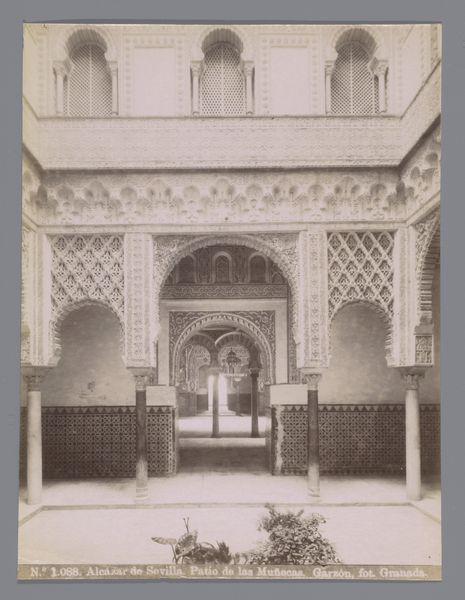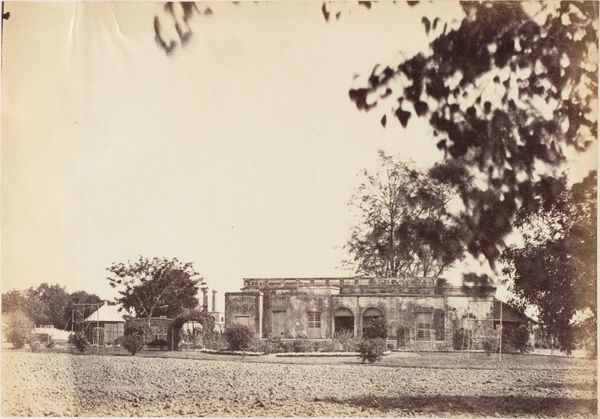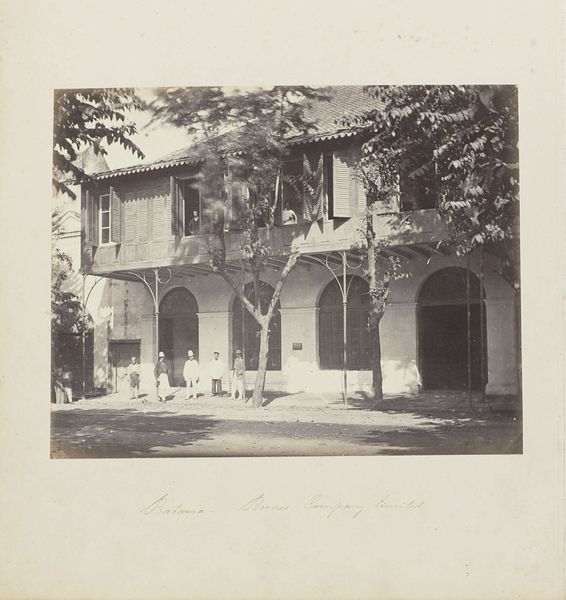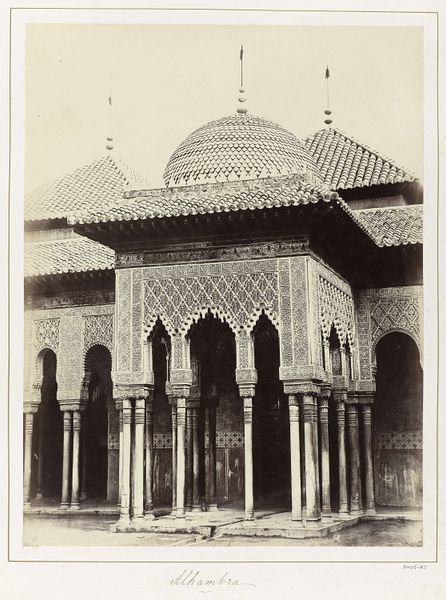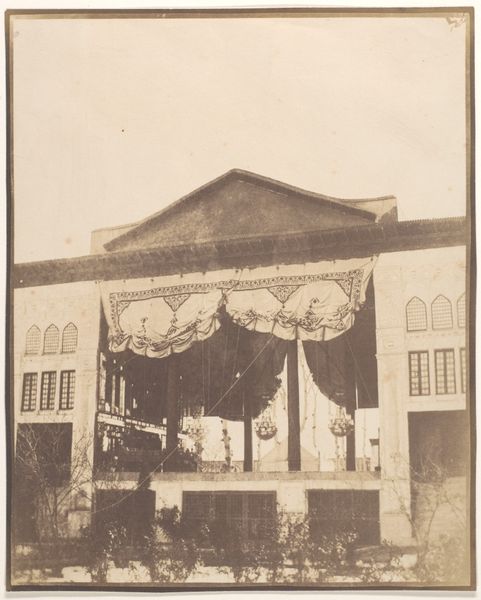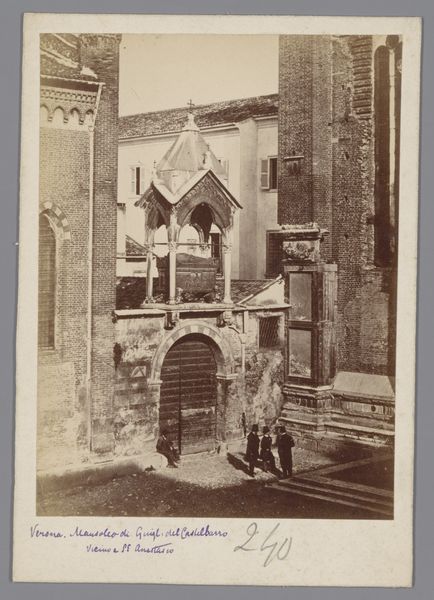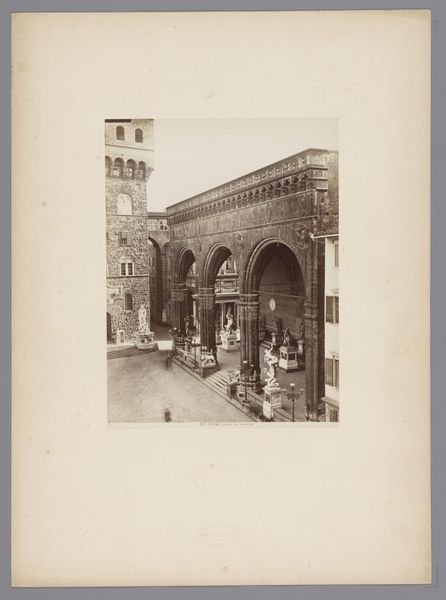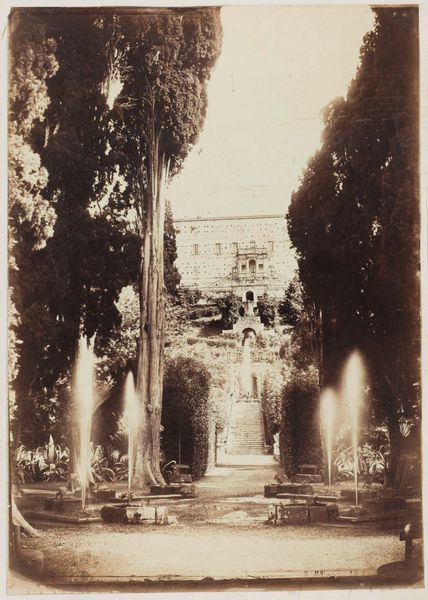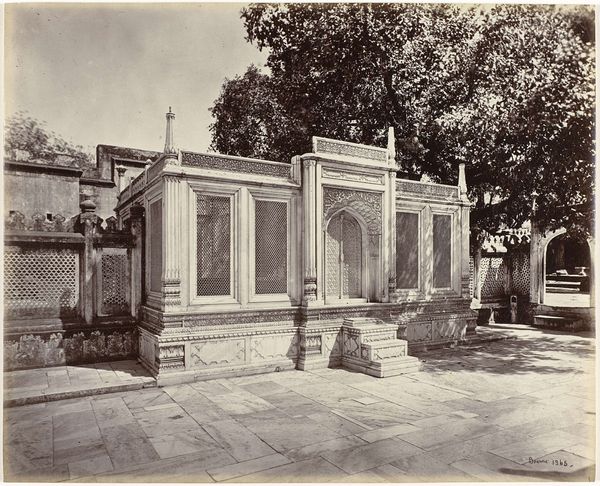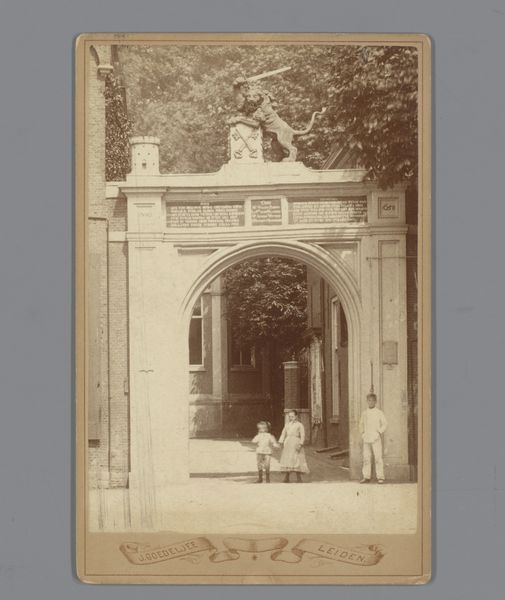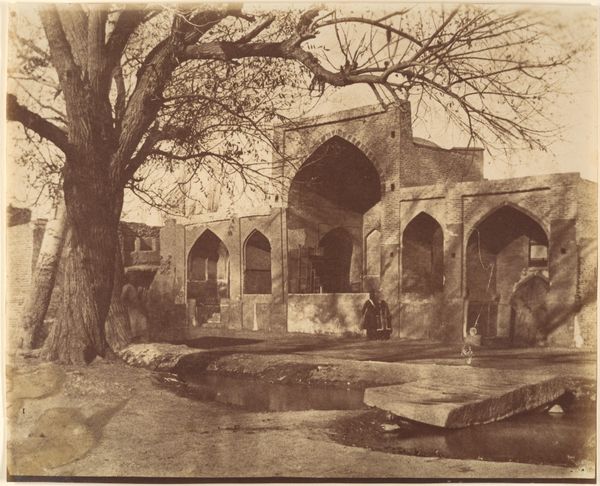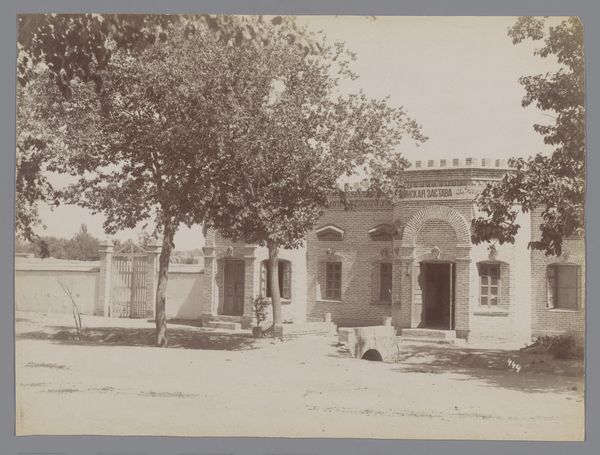![[Mosque of Koum] by Luigi Pesce](/_next/image?url=https%3A%2F%2Fd2w8kbdekdi1gv.cloudfront.net%2FeyJidWNrZXQiOiAiYXJ0ZXJhLWltYWdlcy1idWNrZXQiLCAia2V5IjogImFydHdvcmtzLzUxMDQ3ZWNmLTVjNmItNDAxNi04ODZmLWFhMzM0MjQ4YjAwOC81MTA0N2VjZi01YzZiLTQwMTYtODg2Zi1hYTMzNDI0OGIwMDhfZnVsbC5qcGciLCAiZWRpdHMiOiB7InJlc2l6ZSI6IHsid2lkdGgiOiAxOTIwLCAiaGVpZ2h0IjogMTkyMCwgImZpdCI6ICJpbnNpZGUifX19&w=3840&q=75)
daguerreotype, photography
#
landscape
#
daguerreotype
#
photography
#
19th century
#
islamic-art
Copyright: Public Domain
Editor: So, here we have "[Mosque of Koum]," a daguerreotype from sometime between 1840 and 1869 by Luigi Pesce. It’s at the Met. It's quite atmospheric. The tonal range is very muted and there are many people in the foreground. How do you interpret this work? Curator: It’s crucial to understand the daguerreotype within its socio-political context. Photography in the mid-19th century was revolutionary, wasn't it? This image challenges Orientalist narratives by showing daily life centered on this mosque, not just the architecture. It presents a specific time, a specific place, through a Western technology that simultaneously documents and interprets. Editor: That's a good point. It shows a group of people engaged in activities or rest near the mosque. Curator: Exactly! And the technology. The daguerreotype process itself requires time and creates a specific image format. What power structures were at play when a European photographer documented this scene of communal activity in what we now know as Iran? Whose story gets told, and how? How does that intersect with identity, representation, and cultural exchange in a colonial context? It's more than just a photograph; it’s a visual record of complex social and political relations. Editor: So, it is not just about documenting a place but understanding the historical power dynamics at play? Curator: Precisely. It’s a layered narrative. Editor: This gives me so much to consider; thank you! Curator: Of course. Analyzing the intersections of photography, power, and cultural representation really enhances our understanding.
Comments
No comments
Be the first to comment and join the conversation on the ultimate creative platform.

